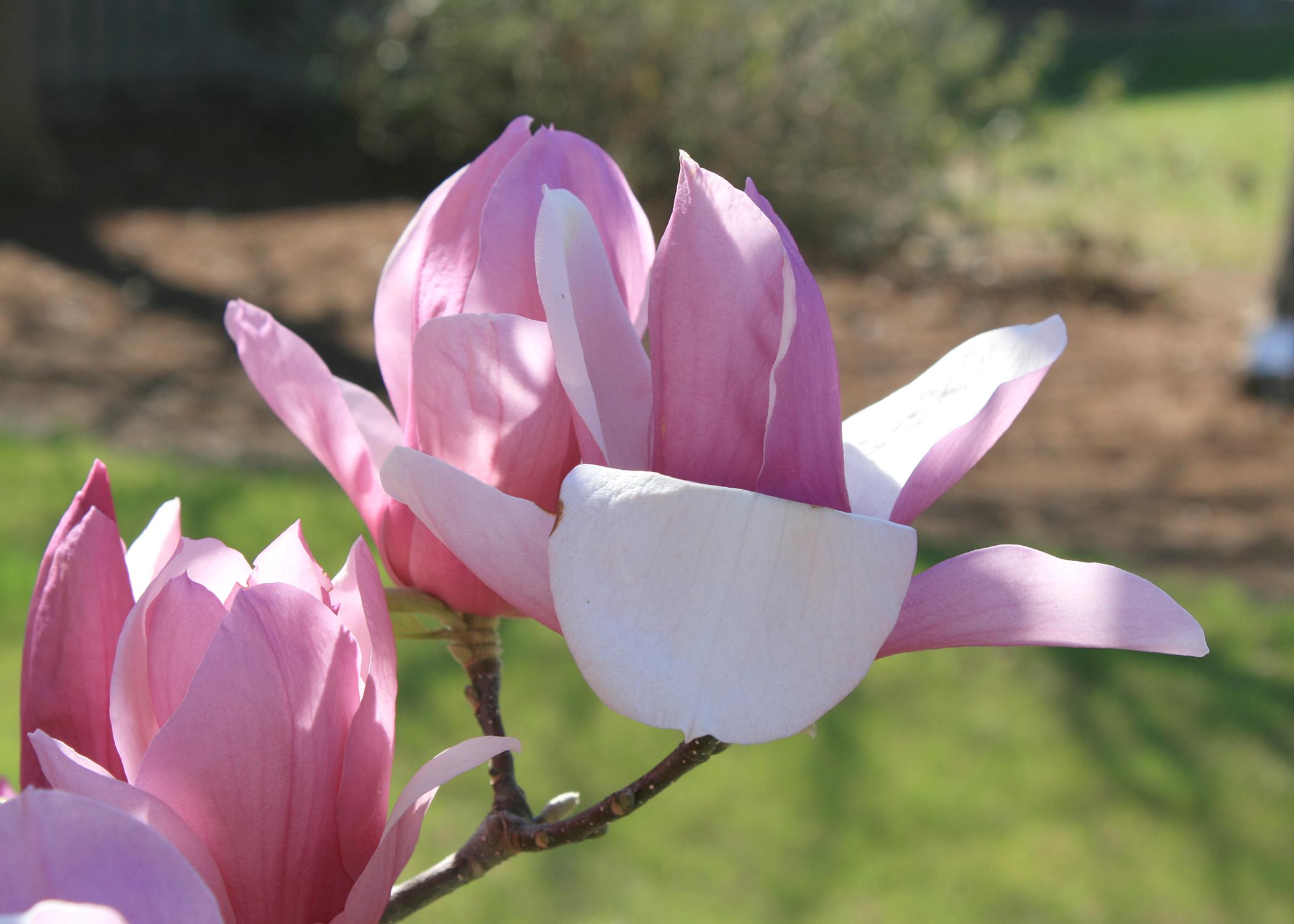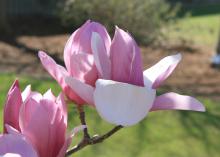Information Possibly Outdated
The information presented on this page was originally released on February 8, 2016. It may not be outdated, but please search our site for more current information. If you plan to quote or reference this information in a publication, please check with the Extension specialist or author before proceeding.
Enjoy early blooms of saucer magnolias
With extremely warm weather in the fall and so far this winter, many of our flowering landscape plants are really confused. I’ve seen fantastic spring displays of color in December and January.
This weather pattern creates a few problems, none of which we can solve as gardeners. We can’t control the weather, like the cold snap that came through the first week of February. When flowers begin to open too early, a quick dip into the low 30s or upper 20s will quickly turn them into mush.
I had these worries as I watched one of my favorite saucer magnolias beginning to flower just a bit too early. The fuzzy brown buds had been swelling for several weeks, which is normal as the colorful petals are perfectly protected. But then a little color started peeking out around the edges, and we had upper 20s on the way.
Fortunately, saucer magnolias produce flowers in enormous numbers, and the few flowers that were nipped were quickly forgotten with the dazzling pink display currently under way.
Some saucer magnolias can have blooms up to 10 inches across. The colors vary from white to pink to a bold purple, depending on the variety. There are many selections and cultivars to choose from, and the decision may be hard to make.
When selecting a saucer magnolia for the landscape, it’s good to consider the options available. This plant normally blooms in mid- to late spring, usually past the risk of spring frosts. Some selections bloom even later, so if you’re concerned about frosts, just select a later bloomer.
I think the multistemmed specimens are the most attractive.
Saucer magnolia is by far the most popular of the flowering magnolias. It is an old ornamental favorite that is a cross between different deciduous magnolias. It dates back to the 1820s and was brought over from Europe. The story goes that the saucer magnolia was developed to bring beauty back to the European landscape after the Napoleonic Wars.
Saucer magnolia is considered a small tree, and it may eventually reach 20 feet by 20 feet. While driving around Mississippi, I have seen specimens that have achieved larger sizes, with some of them being larger than some houses.
You can maintain and control the size of the plant by pruning. The best time to prune this spring-flowering tree is immediately after flowering.
The saucer magnolia is a good choice as a low-maintenance, easy-to-care-for plant. Be sure to plant yours in full sun in well-drained soil. It’s important to make sure the soil doesn’t dry out completely, as this causes the saucer magnolia to drop its leaves prematurely. The flower buds also don’t develop as well during drought conditions.
Provide a couple of deep irrigations during times of drought stress to help ensure a beautiful spring next year.
[EDITOR’S NOTE: Dr. Gary Bachman is an associate Extension and research professor of horticulture at the Mississippi State University Coastal Research and Extension Center in Biloxi. He is also the host of the popular Southern Gardening television and radio programs. Locate Southern Gardening products online at extension.msstate.edu/shows/southern-gardening.]









